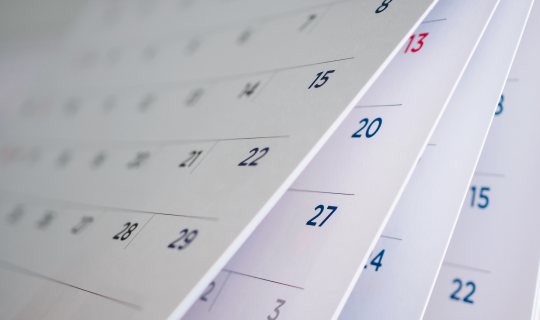What Goes into a Realistic Pharmacy Valuation?
By Bill LaRose, RPh

It’s also easy to forget what it was like to be on the other side of the bargaining table when you were looking to buy your first store. That’s why, at the beginning of the go-to-market process, most independent pharmacy owners overshoot the price that a willing-and-able buyer would agree to pay.
Fortunately, there’s a practical process for keeping your feelings in check. Multiple rules of thumb and guidelines, derived from financial and operational record-keeping, will guide you toward a fair, realistic selling price.
What goes into valuation?
Through training and experience, pharmacists rely on formulas every day while calculating drug dosages and percentages. Extending that logic, many sellers assume there must be a standard formula that could be used to generate a reasonable pharmacy listing price.
While on the right track, no single formula will do the trick when selling a pharmacy. In the business world, there’s often more than one right answer to any proposition. You also have to consider whether a financial institution would likely approve a loan for the buyer at the proposed price.
What’s needed is a multi-level consultative review that cumulatively arrives at an informed opinion of the pharmacy’s worth—and then stacks the valuation in a low-to-medium-to-high price range.
As the seller, you’ll need to gather three years’ worth of profit-and-loss statements, balance sheets, tax returns from the most recent three years and pharmacy prescription reports that identify your top payers, top drugs dispensed, ratios of generic vs. brand drugs sold (and which were new scripts vs. refills).
Armed with that information, your advisor can provide you with an opinion of value and help you start to prepare an exit strategy. The following factors all play a role in formulating a justifiable opinion of value:
- Percent
of gross sales
Start by totaling up your yearly gross sales, which is the combination of your prescription sales and the revenue from the front end of the store (e.g., over-the counter items, beauty products, greeting cards, gifts). Across the industry, independent pharmacies generally sell in a range from 18 to 22 percent of gross sales. Let’s say your gross sales are $5 million per year. At the low end (18 percent), the selling price would be tabbed at $900,000. Likewise, the price would be $1,000,000 at a medium valuation (20 percent), and $1,100,000 at a high valuation (22 percent).
- Previous
year’s gross margin
Take your gross sales and subtract out the cost of the pharmaceutical and front-of-store goods you purchased in the previous year. This is your gross margin, which represents the dollars available to pay your pharmacy’s expenses, salaries and debt service. Values range from 1 percent below to 1 percent above the previous year’s gross margin. At a gross margin of $1,000,000, a low value (-1 percent) would be pegged at $990,000 and a high value (+1 percent) at $1,010,000.
- Dollars
per annualized prescriptions
How many prescriptions did you fill over the most recent fiscal year? This rule of thumb takes your annual script count and multiplies it by a range of roughly $10 to $15 per prescription. So, for example, if you filled 50,000 prescriptions, a low value ($10 per prescription) would be $500,000, a medium value ($12.50 per prescription) would be $625,000, and a high value ($15 per prescription) would be $750,000.
- Multiple
of adjusted cash flow
Accountants call this adjusted EBITDA (earnings before interest, taxes, depreciation and amortization). It’s also known as adjusted cash flow or owner’s discretionary income. Whatever the terminology, you’re calculating net profit plus non-traditional or non-recurring expenses charged to the store by the owner. Some owners charge off the use of a personal car, cell phones, travel, meals, etc. Those charges are added back to the store’s net profit, which is then multiplied by a factor ranging from 2.5 to 3.5 to arrive at a projected selling price. With adjusted EBITDA at $350,000, a low-value multiplier (2.5) would yield a selling price of $875,000, a medium-value multiplier (3) would come in at $1,050,000, and a high-value multiplier (3.5) would be $1,225,000.
Note that while all these rules of thumb would be taken into account, the buyer’s operational plan determines which should be given the most weight. For instance, if the buyer expects to purchase your store and operate it in its current location (i.e., a buy-and-operate acquisition), a bank would focus on adjusted cash flow to determine if the selling price is financeable. Alternatively, if another pharmacy is looking to buy your prescription files and move them over to another location (i.e. a file buy), the valuation would be driven primarily by dollars per annualized prescriptions.
Is the price right?
Your consultant’s role in all of this is to figure out the proper weighting and give you an expectation of where the selling price should fall. Weighted averages of each value method would be used to map out low, medium and high potential asking prices that reflect how your business has been trending—declining, flat or growing—over the past three years. From there, you’d have a workable range from which to negotiate a deal. Inventory would be in addition to this value for the business.
At the end of the day, your selling price must be realistic, fair to both parties and justifiable through historical financial and performance data. Always keep in mind that the buyer needs to be able to earn a living from the pharmacy’s operations, pay expenses, cover debt service and still have some income left over to either grow or reinvest in the business. After all, you want the new owner to carry on your legacy and continue serving your community with the same high level of care that you’ve been providing for so many years.
When you offer that type of opportunity to a prospective buyer and it’s accepted, you can shake hands knowing you’ve done the right thing.






